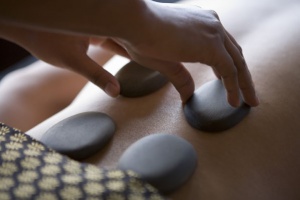Hotel spas lag industry recovery, but will lead in healthier times | By Andrea Foster

The great recession appears to have been harder on hotel spa operations than on hotels themselves. According to a new study released by PKF Consulting USA (PKFC), hotel spas experienced deeper declines in revenues and profits than did hotels, as measured by RevPAR, in 2008 and 2009 and also are taking longer to recover. While the hotel industry began to improve in the second quarter of 2010, hotel spas did not show signs of a rebound until 2011. The good news is that spa revenues are expected to continue to grow and even outpace hotel RevPAR changes over the next few years as the economy improves and personal income levels begin to rise.
Because hotel spa services are often perceived as a luxury, the changes in hotel spa revenue since 2006 are not surprising. In the prosperous years of 2006 and 2007, the annual change in unit-level hotel spa revenue was comparable to the changes in RevPAR. However, concurrent with the economic recession, spa revenue declined at a greater pace than other hotel revenue sources in 2008 and 2009, and did not post a year-over-year increase in 2010 as was observed for RevPAR.
These findings come from the 2011 edition of Trends® in the Hotel Spa Industry, an annual survey conducted by PKFC since 2007. The report presents aggregate revenue, expense, and profit data from the spa departments of 151 hotels located across the U.S. Leased spa operations, day spas, and destination spas were excluded from the survey.
Hotel Spa Revenues
Overall, hotel spa performance deteriorated in 2010, although some categories fared better than others. On average, the hotel spas in the survey sample suffered a 10.5 percent decline in departmental revenue in 2010. Urban hotel spas experienced less of a drop in revenue (-1.2%) compared to resort hotel spas (-13.6%).
ADVERTISEMENT
We attribute the relative strength of urban hotel spa performance to the faster recovery of large metropolitan hotel markets compared to resort locations. In addition, urban hotel spas tend to supplement hotel guest demand with people from the local community. The recession caused hotel spas to be more creative with their marketing initiatives, as well as source more customers from the local market.
In general, the smallest and largest hotel spa operations suffered less of a decline in revenue in 2010. Conversely, the greatest declines were observed in medium-sized operations (10 to 20 treatment rooms). The mid-sized spas are caught in-between offering the intimate experience of a small operation, and the grand showcase facility frequently found in a large hotel or resort. Medium-sized spas are often found in hotels that likely should have a spa as a guest amenity, but the property may not be specifically known for its spa facility or experience.
Hotel Spa Profits
Facing a decline in revenues, hotel spa managers were able to control the expenses within their department. From 2009 to 2010, department managers reduced their total hotel spa expenses by 3.9 percent. The greatest cost reductions (-4.9%) were achieved by cutting the amount spent on such operational expenses as ambience and decorations, health and beauty products, laundry, linen, and uniforms. Even labor costs, notoriously difficult to control within spas, were cut by 3.8 percent in 2010.
Despite the best efforts of managers to control their costs, hotel spa profits declined by 27.4 percent in 2010. This follows a 13.9 percent decline in profits in 2009. With profits declining to a greater degree than revenues, the average spa department profit margin declined from 28.1 percent in 2009 to 22.8 percent in 2010. Per the Uniform System of Accounts for the Lodging Industry, hotel spa department profits are calculated before the deduction of undistributed expenses and fixed charges.
2011 And Beyond
PKFC believes that spa revenues began to grow in 2011, and will continue to do so over the next few years. This is based on feedback from clients, as well as the fact that the upper-tier chain scales are leading the lodging industry recovery, and these are the properties that are more likely to have spa operations. Our optimism regarding the future for hotel spas is further supported by recent demographic trends. A greater share of household expenditures is being spent on ‘health and personal’ purchases, so as income levels start to rise (as forecast by Moody’s Analytics), so, too, will people’s budgets for health and wellness expenditures.
According to the December 2011 edition of Hotel Horizons®, PKF-HR is forecasting annual RevPAR levels for U.S. hotels to increase between 4.7 and 5.3 percent from 2012 through 2015. As we enter a period of prosperity for the lodging industry in 2012 and beyond, we believe spa revenues will repeat their historical trend and lead the pace of revenue growth.
By Andrea Foster

